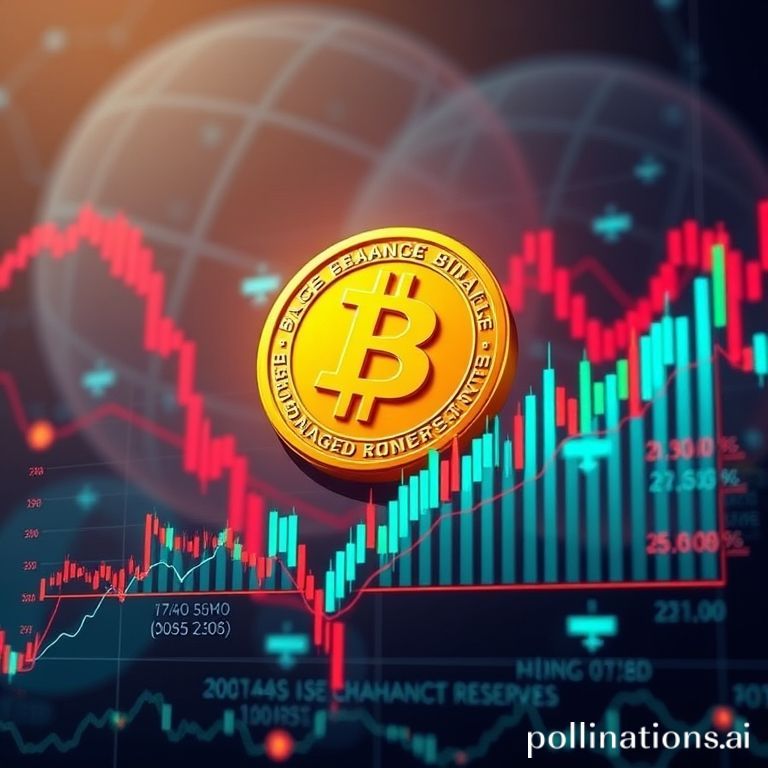
Bitcoin (BTC) currently finds itself in a tight trading range, fluctuating between $110,000 and $115,000. This period of consolidation reveals a divided sentiment across various cryptocurrency exchanges. While traders on Binance appear to be adopting a distinctly bullish outlook, their counterparts on other major platforms continue to display a degree of caution and indecision regarding the leading digital asset's near-term direction. This divergence in sentiment offers a fascinating glimpse into the complex and often fragmented nature of the crypto market.
Binance Traders Exhibit Strong Bullish Conviction
Recent derivatives data emerging from Binance, highlighted in a CryptoQuant Quicktake post by analyst Crazzyblockk, strongly suggests a significant shift in market dynamics. Specifically, the Bitcoin (BTC) funding rate on Binance has shown a notable increase, which is a clear indicator of traders adopting an aggressive bullish stance. This particular metric is crucial as it reflects the cost of holding long positions in the perpetual swaps market. When the funding rate is positive, long position holders are paying short position holders, signifying a strong demand for bullish bets.
In stark contrast to Binance, the BTC funding rates on other prominent exchanges such as OKX, Bybit, and Deribit paint a picture of continued uncertainty. These platforms' funding rates suggest that traders are still hesitant to commit to a definitive directional bias, preferring to remain on the sidelines or engage in more conservative strategies. As of September 23, the BTC perpetual funding rate on Binance had impressively climbed to +0.0084%. This elevated rate is a compelling sign that long positions are overwhelmingly dominant, with traders confidently paying a premium to maintain their optimistic bets on Bitcoin's price trajectory.
It is particularly noteworthy that this increase in Binance’s funding rate is not an isolated incident. The data indicates a positive seven-day change, which further underscores a strengthening conviction among Binance’s trading community. This sustained upward trend in the funding rate suggests a growing belief in a future price surge. For context, the BTC funding rate on OKX currently hovers at a marginal -0.0001%, Bybit stands at 0.0015%, and Deribit records 0.0019%. This numerical disparity represents more than just a difference in figures; it signifies a divergence in market narrative. While funding rates on OKX and Bybit have actually experienced a slight decrease over the last week, Binance's rate has consistently climbed, setting it apart from its peers. For those unfamiliar, funding rates serve as a real-time barometer of trader sentiment in the perpetual swaps market. A robust positive rate, especially one that deviates significantly from the broader market, is typically indicative of aggressive bullish speculation and a willingness to bet on upward price movements.
Broader Market Signals and Potential Bitcoin Movement
Beyond the immediate funding rate dynamics, other macroeconomic indicators within the Bitcoin ecosystem also hint at a potential shift. In another insightful CryptoQuant post, contributor XWIN Research Japan observed that Bitcoin’s implied volatility has descended to its lowest levels since 2023. This historical parallel is particularly intriguing, as the previous period of similar market tranquility was followed by an extraordinary rally of 325%, propelling BTC from approximately $29,000 to an impressive $124,000. Such a significant drop in implied volatility often precedes major price movements, suggesting that the current calm could be the precursor to a substantial market event.
Furthermore, the analyst highlighted that the total Bitcoin exchange reserves continue to deplete at an accelerated pace, reaching fresh multi-year lows. Historically, a consistent reduction in BTC exchange reserves has been a reliable precursor to "supply squeezes." This phenomenon occurs when the available supply of Bitcoin on exchanges diminishes, leading to increased scarcity and, consequently, a dramatic rise in demand and price. The current trend suggests that more investors are moving their Bitcoin off exchanges, likely into cold storage, which is a common behavior among long-term holders anticipating future price appreciation.
Despite these potentially bullish indicators, the overall sentiment surrounding BTC in the broader market appears to be somewhat subdued. The widely recognized Bitcoin Fear & Greed Index currently suggests that many investors are operating under a state of "fear," exhibiting reluctance to enter the market. Counterintuitively, such periods of widespread fear are often viewed by savvy investors as opportune moments to accumulate assets like BTC at more favorable market prices, adhering to the principle of "buy when there's blood in the streets." However, fresh on-chain data from BTC wallets reveals a fascinating counter-trend: new wallets, defined as those less than a month old, are beginning to actively acquire the top digital asset. This influx of fresh capital from new participants could provide additional buying pressure. At the time of writing, BTC is trading at $113,796, reflecting a modest 1% increase over the past 24 hours. The confluence of aggressive long positions on Binance, historically low implied volatility, dwindling exchange reserves, and renewed interest from new market entrants paints a complex yet potentially optimistic picture for Bitcoin’s immediate future.
